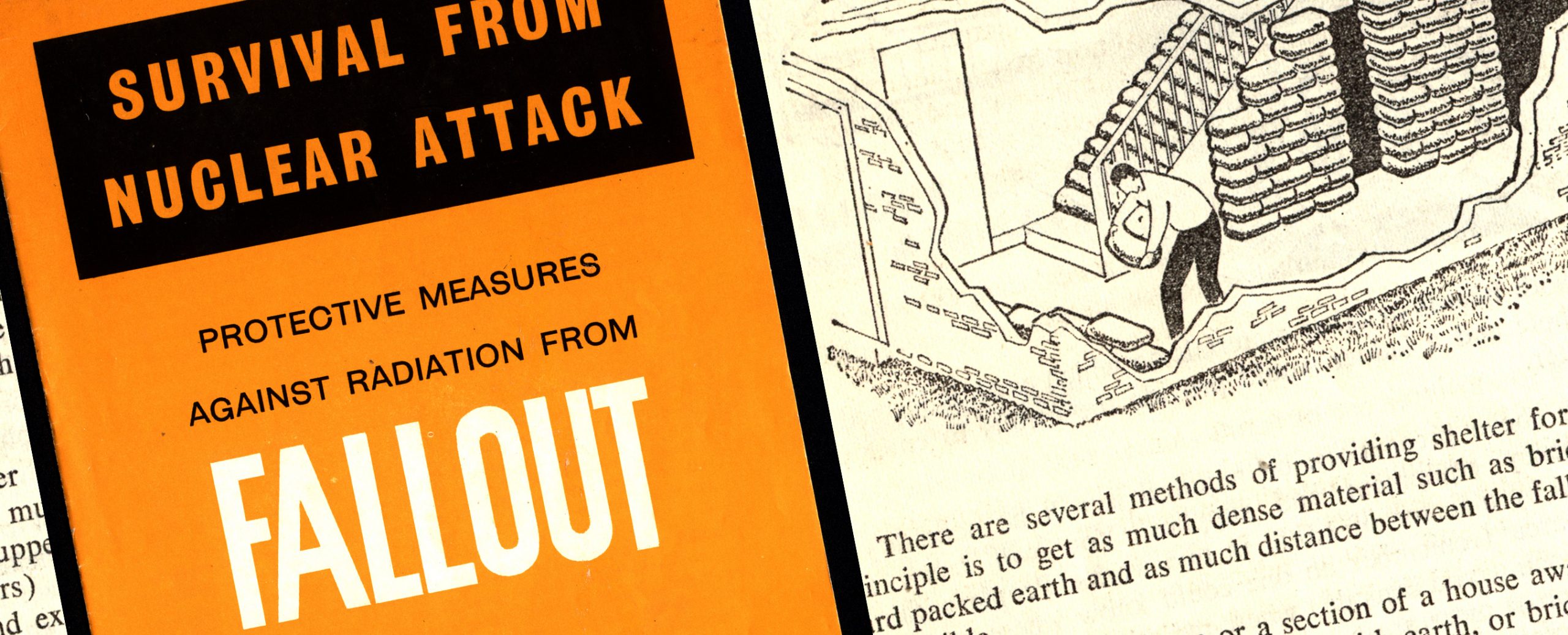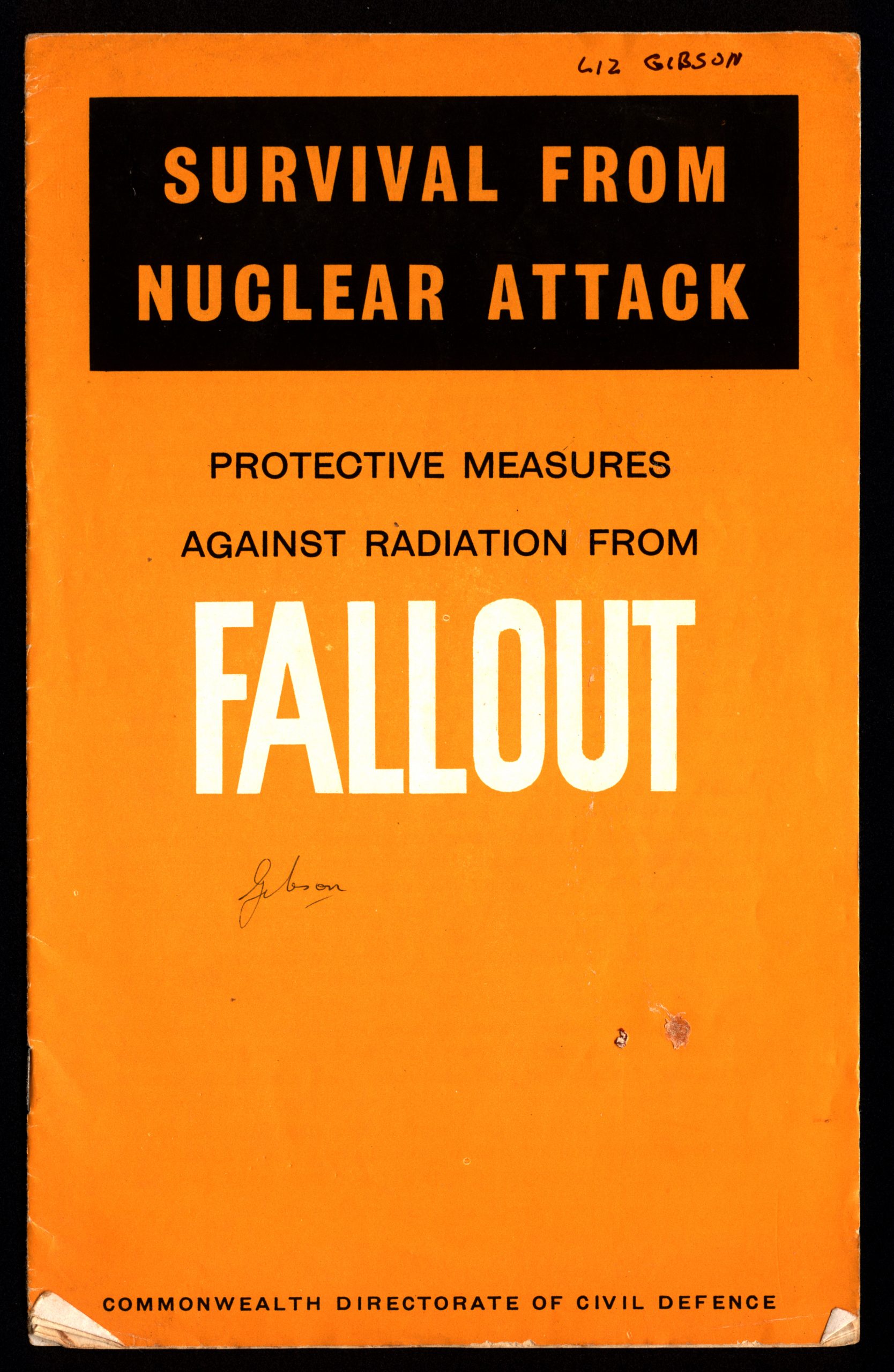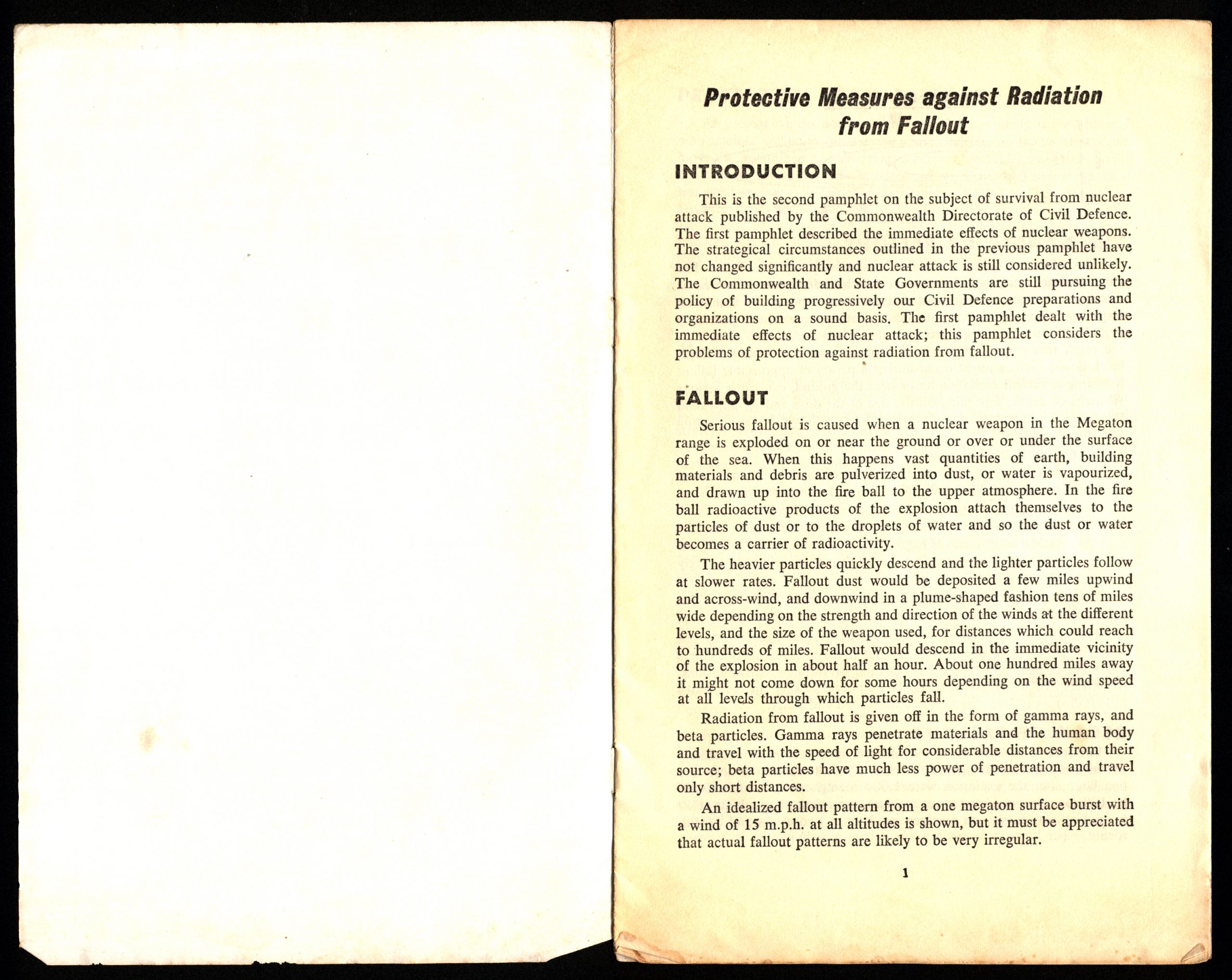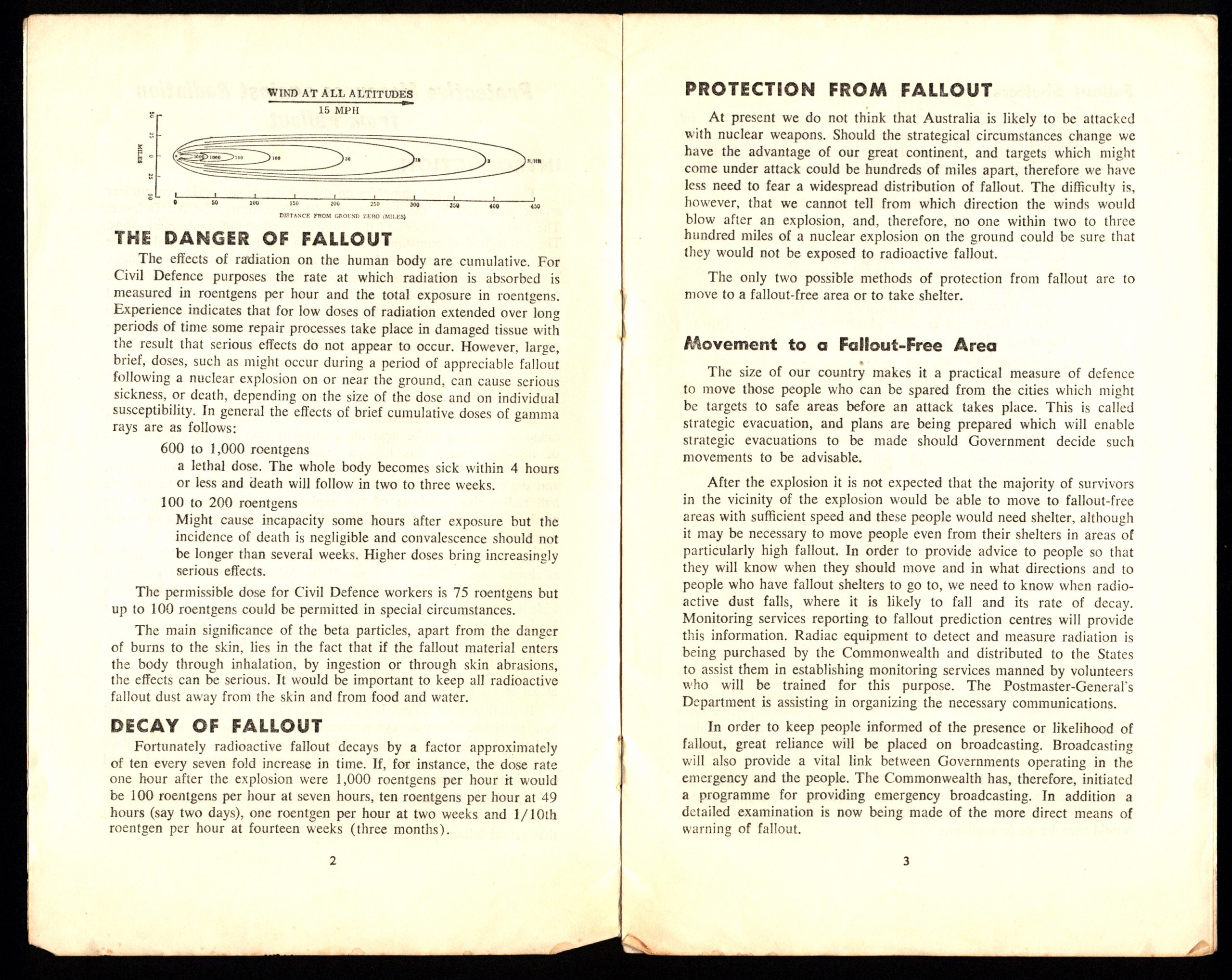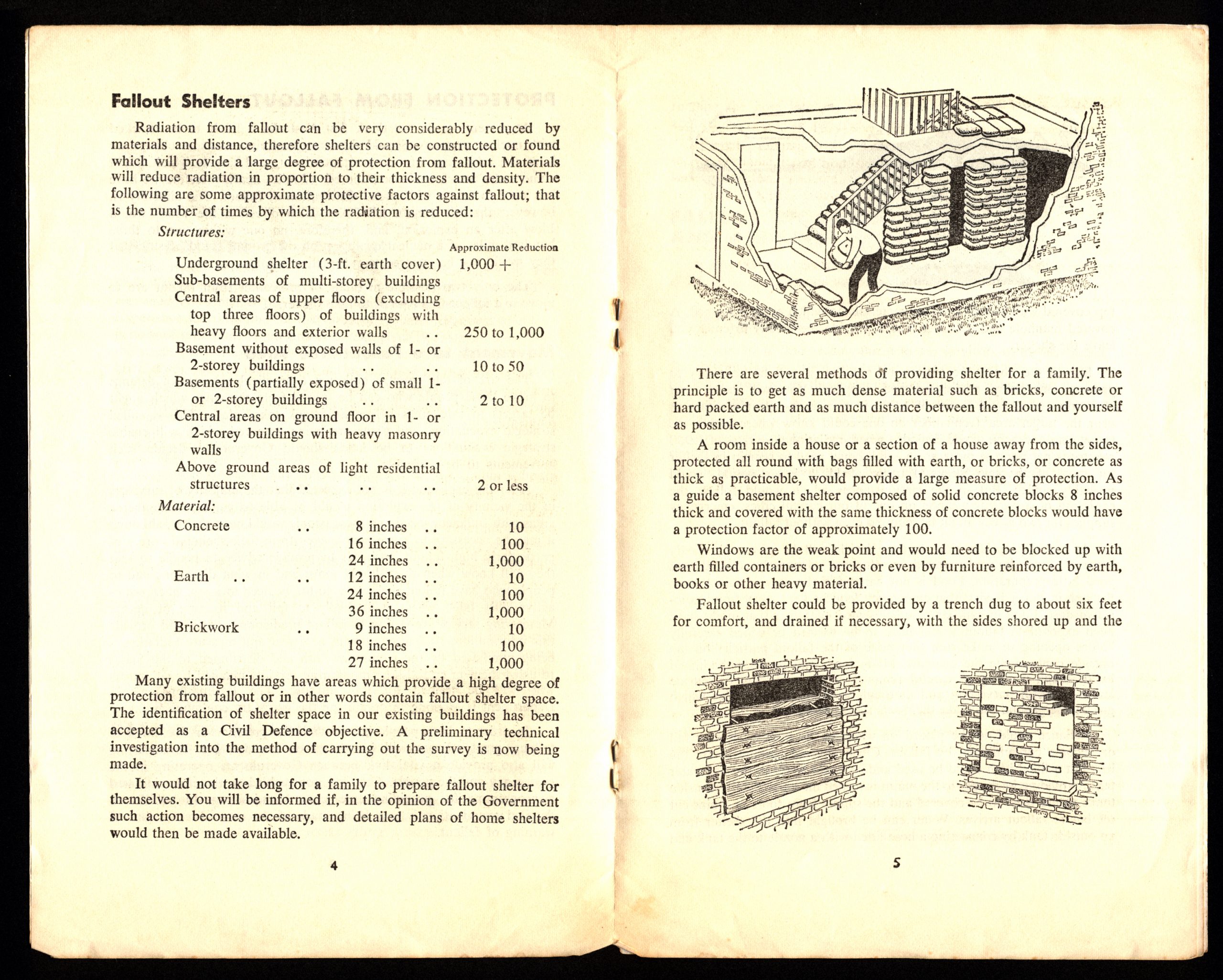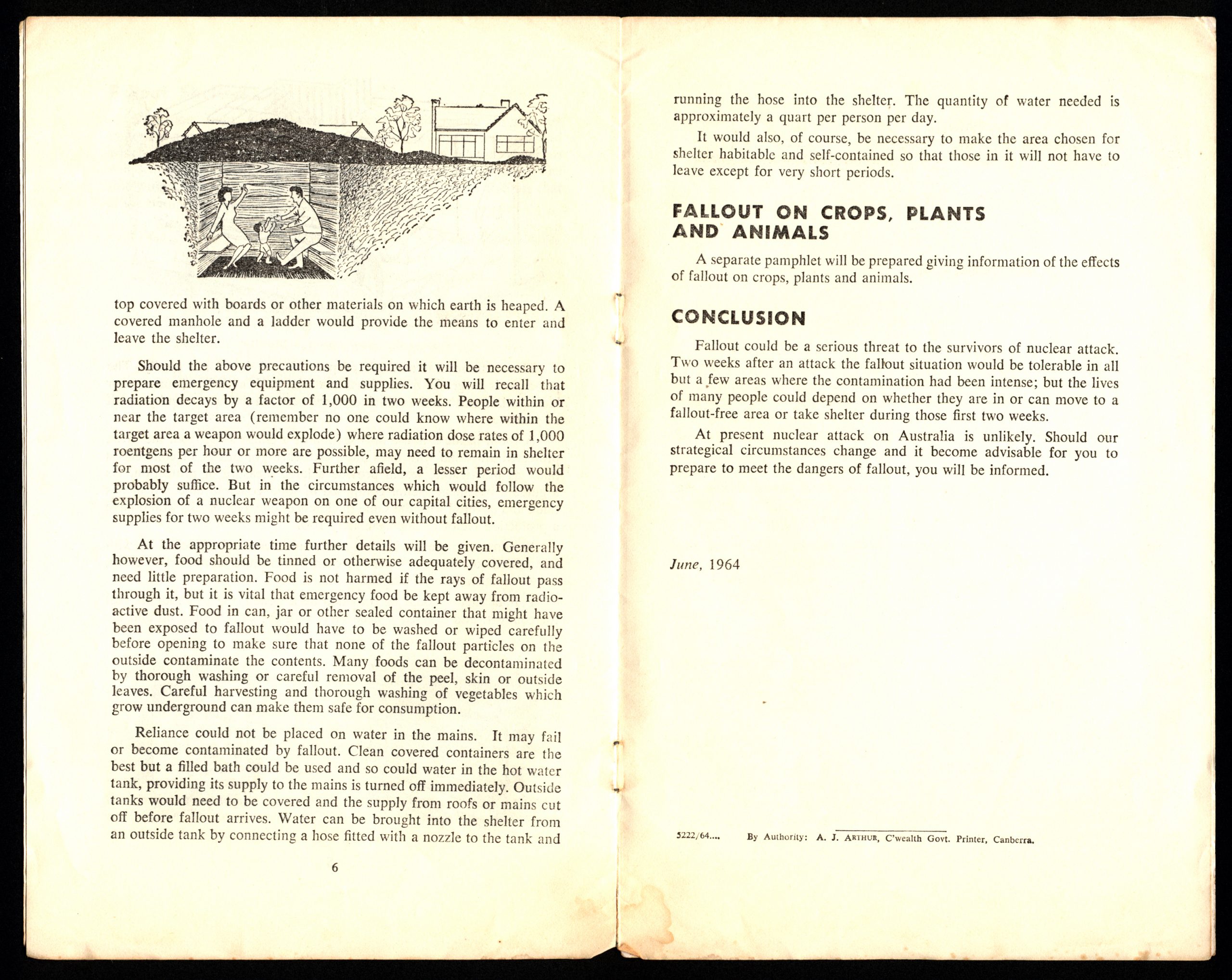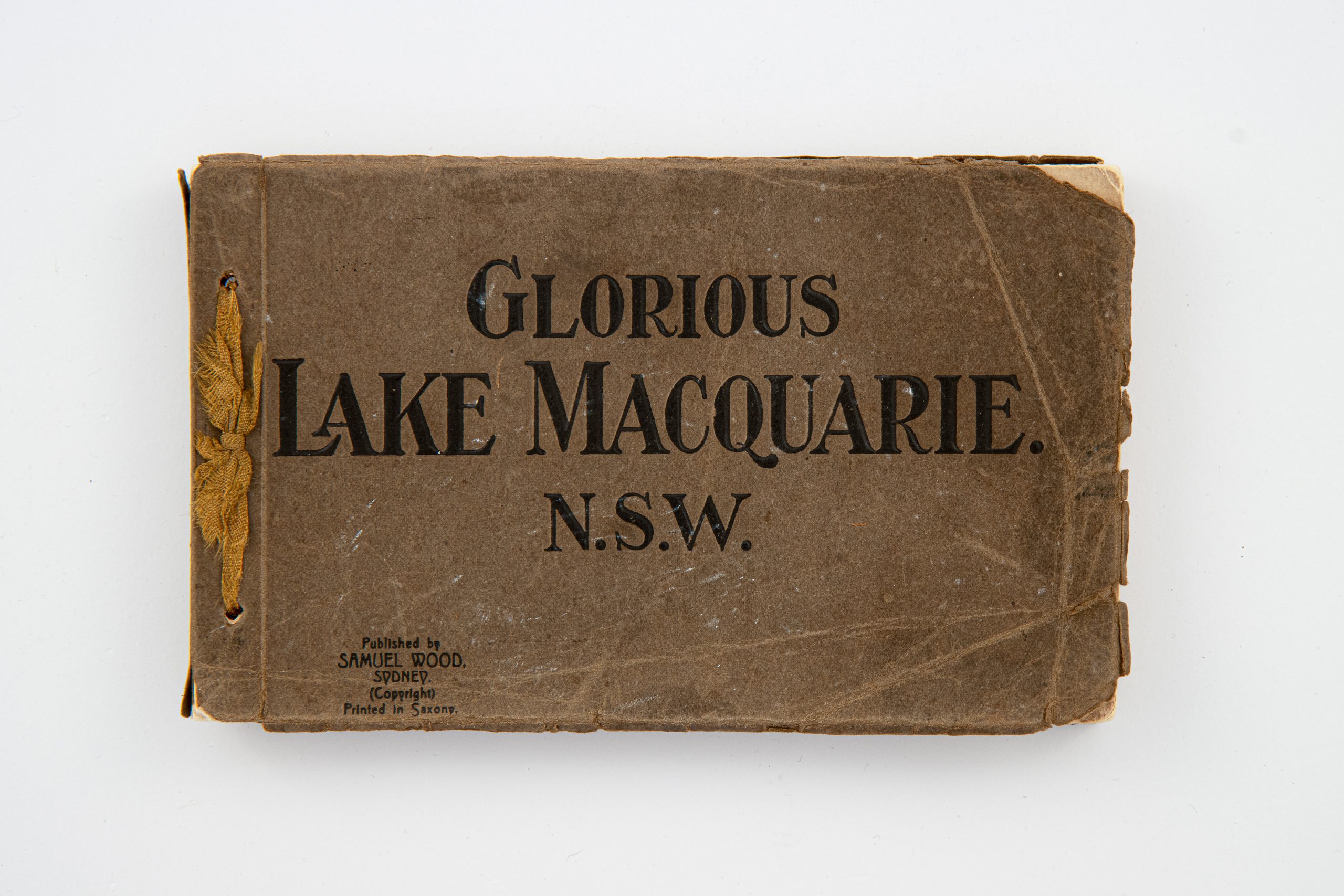Protective Measures
A Guide for Surviving Nuclear Fallout
‘At present nuclear attack on Australia is unlikely,’ reads the final page of this booklet, ‘Should our strategical circumstances change and it become advisable for you to prepare to meet the dangers of fallout, you will be informed.’
Locals of the Greater Newcastle area would have had mixed emotions when these pamphlets began arriving for public reading, likely at a local council building.
By 1964, when this pamphlet was published, workers belonging to various unions—including the coal and shipping industries—had already been involved in anti-nuclear strikes and protests. This was not necessarily because they were concerned about the Soviet Union making a ‘ground zero’ out of Newcastle, but rather because they were disappointed and appalled by the nuclear testing being carried out by the United States and United Kingdom on Australian soil.
To some protesters, the testing symbolised the increased likelihood of Australia becoming a target in nuclear warfare. To others, the great concern included the damage to the land on which the tests were carried out, which included health issues and ongoing environmental impacts within the fallout zone and beyond.
Already, in 1956, Newcastle had seen hydrogen bomb testing first-hand when the Breakaway was dropped on a testing site in Maralinga, South Australia. The bomb created a nuclear cloud so large that it dispersed between Darwin and Newcastle; both thousands of kilometres from ground zero.
Society was tense living in the shadow of the hydrogen bomb. The stress of major world powers owning and testing weapons which promised ‘Mutually Assured Destruction’ was a major contributor to the widespread desire for peace, including that felt by people living in the Greater Newcastle region.


